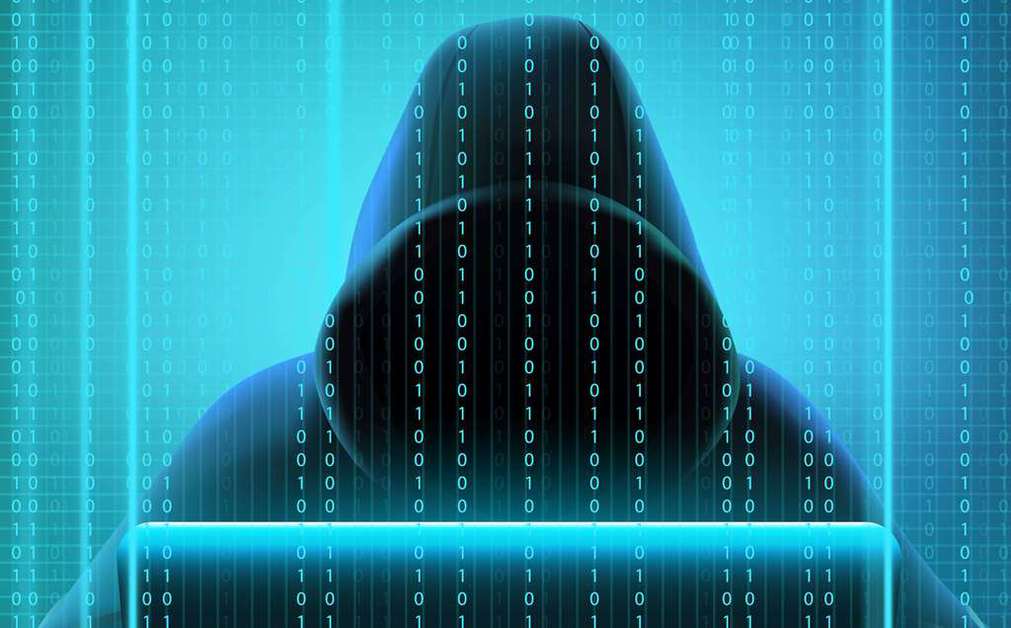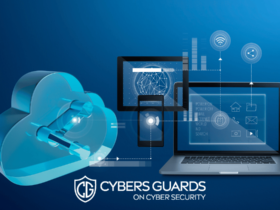Cyber Threat Hunting – A Complete Guide- The process of proactively seeking for attackers or viruses that may be lurking in your network system and have gone unnoticed is known as cyber threat hunting. Cyber threat hunting, like real-life hunting, may be difficult and takes a specially trained specialist with a high level of patience, ingenuity, critical thinking, and a good eye for spotting the target prey. The prey may be quietly listening for sensitive information, patiently syphoning off data, or working their way toward substantial data that will allow them to gain access to critical information or assets.
In addition to commercial cybersecurity solutions, every organisation requires additional cyber safeguards. This is necessary since no system can be completely safeguarded. Regardless of how advanced technology is, there is always the possibility that more advanced dangers will get past the defensive layers. Many dangers should be prevented with basic hygiene and the right use of firewalls and other reinforced security solutions. However, after an intruder has gained access to your network without being recognised, there may be less protection available to detect and remediate the situation. Cybercriminals spend an average of 192 days on a system before being found. This is more than enough time for a network to be seriously harmed.
Most organisations’ security cultures have traditionally relied only on the installed security solution for system protection. The problem is that most protection is reliant on signatures. Patterns based on known risks are detected using signature-based solutions. However, detecting newly produced malware with unique code is significantly more difficult.
What is a Threat Hunter?
A threat hunter is a security expert who works for a Managed Security Service Provider (MSSP) or for the company’s Security Operations Center. Threat hunters, also known as threat analysts, use software and manual procedures to discover potential incidents or ongoing threats that have infiltrated systems.
Threat hunting is a difficult and time-consuming process. It necessitates the expertise of a cybersecurity and enterprise operations expert. It also necessitates a working knowledge of the industry. Detecting an issue in a network might be as simple as noticing a sudden fall or rise in traffic.
Some advanced threats (such as exfiltration techniques) involve clandestine routes or encryption techniques, making them delicate. In DNS Tunneling, for example, data is encoded in DNS replies and queries. It resembles a standard connector in appearance. A smart threat hunter can spot anomalies like changes in DNS traffic per domain or request and response sizes.
Hunting Tools for a Threat Hunter.
Threat hunting is a difficult and time-consuming process. Without the correct equipment, even the most seasoned hunter would fail. The following are necessary things.
- Baselines – this is an indicator and should be laid out before the detection process starts. The importance of baselines cannot be overstated. What is authorised or expected to transit via a traffic network is defined by a baseline. Baselines make it simple to spot irregularities that need to be investigated.
- Data – every hacker needs access to crucial logins to devices on a network’s system. Databases, servers, and endpoints are examples of important devices. These devices hold vital information. Creating a focal place for assembling data for analysis is one strategy. Data from the numerous data points must be collected, correlated, and standardised. A Security Information and Event Management (SIEM) device is a standard data collection tool. A threat hunter’s best weapon is a SIEM device.
- Threat intelligence – cybercriminals sometimes cooperate, sharing malicious artefacts, codes, and information. A rise in the number of organisations detecting comparable assaults corresponds to an increase in the frequency of such attacks. An effective threat intelligence system should gather actionable information about risks to the environment from a variety of sources.
On the emergence of a new assault, an effective Intel system improves a hunter’s capacity to recognise indicators of compromise or indicators of attacks (IOAs) within a network and gives them enough time to act on this information.
What to Look for During the Hunt
The definition of prioritised intelligence requirements is the starting point of every threat hunting procedure (PIRs). PIR questions and responses are used to determine the best course of action. Consider the following scenario:
From where does a threat emanate?
Is there an undetected cyber danger based on the daily alarms and the plethora of logs dealt with on a daily basis?
What are the company’s most valuable assets that hackers would be interested in, and what are some of the most likely routes for black hats to obtain access?
It will be simple for a threat hunter to gain answers to specific information gaps using this type of high-level questioning. Other questions to consider include:
What is the total number of low-level warnings associated with a specific threat?
Are there any discrepancies between logs from the last 30 to 60 days and current threat intelligence?
Are there any oddities, such as weird commands?
As a result, when hunting for active threats, a threat hunter should look for data, evaluate and interpret the results using the tools available, discover irregularities, and take the appropriate steps to stop them.
Where Does Threat Hunting Fit?
Threat hunting is an add-on to the regular threat detection, reaction, and remediation procedure. Traditional approaches evaluate raw data and issue alerts, whereas threat hunting uses automation and customised queries to derive leads from the same data.
The retrieved leads are then analysed by human danger hunters. Professionals must be able to recognise symptoms of malicious behaviour. The pipeline that manages the identified indicators is the same pipeline that manages the identified indicators.
Defining an Ideal Hunting Maturity Level
The following three essential elements are used to classify threat hunting programmes into levels:
- The threat hunter’s experience and expertise.
- The accuracy of the data gathered.
- Data collection and analysis tools and methods
There is little or no data collection routine at the beginning of maturity. Automated alerting is the only method of communication used by the company. The human work is focused on resolving alerts. Even with an experienced hunter, the group is not deemed capable of threat hunting at this time.
It takes effort to acquire a higher level of maturity, and as one could assume, the results from different levels varies significantly. For example, an organisation with a high level of procedural maturity can collect data using appropriate procedures, making threat hunting a reality.
HMM 0 Initial
- Automated alerting is the primary source of information.
- There is little or no data collecting on a regular basis.
HMM 1 Minimal
- Threat intelligence indicator searchers are included.
- Routine data collection at a moderate to high level
HMM 4 Leading
- The bulk of successful data analysis techniques are automated.
- Routine data collecting at a high or extremely high level
HMM 3 Innovative
- New data analysis procedures are created.
- Routine data collection at a high or extremely high level.
HMM 2 Procedural
-adheres to processes for data analysis devised by others
– A high or extremely high level of data collection on a regular basis
Despite the large differences in hunting results between levels, it is still necessary to evaluate and identify the best level for a threat-hunting programme.
Threat hunting is usually done after an event has occurred in most companies. This is what is known as reactive threat hunting. To maintain eliminating dangers that may or may not exist, mature threat hunting necessitates proactive hunts. Because there isn’t a visible threat, there isn’t a clear starting point, endpoint, or path through the hunt.
Threat-hunting Process
Threat hunting is a cyclic process that involves multiple stages. Because the hunt is proactive, the hunter has no idea what to seek for. It all starts with determining the threat hunting objective. The next stage is to do an analysis. To remove the danger from the system, the final stage is remediation and reaction. The following is a list of the various stages:
Defining the hunt
The first step in the hunt is to determine why the hunt is required. This is where you highlight the key reasons for conducting the hunt. Because there are so many potential threats and data to gather, an undirected hunt is likely to go astray. A sequence of tiny parts of a directed hunt is better than a single huge undirected hunt.
There is no specific threat to hunt when you do a proactive threat hunt. As a result, defining the search becomes challenging. A hunt can be defined in two ways: data-driven hunting and target-driven hunting.
— A quest that is focused on a certain goal
A target-driven hunt detects whether or not a certain threat is present in a network at any given time. Here are several examples:
An advanced persistent threat’s tools, methods, and procedures (TTP).
Compromise indicators for unnoticed attacks.
MITRE’s ATT&CK framework has specific attack vectors.
Prior to the actual quest, having a target helps to provide a beginning point for the search and, more importantly, streams focus on a specific sort of data to be collected. Evidence of a threat or other crucial information may be discovered during the quest. This could cause a shift in emphasis.
— A hunt based on data.
This is where the hunt begins, with a certain set of data being collected first. After that, a thorough examination of the acquired data is carried out to see whether there are any anomalies that have gone unreported within the data set. These discovered anomalies serve as a jumping-off point for a more focused and extensive search.
It’s important to think about the attack life cycle while deciding which data set to start with. It is advisable to choose a data collection that will allow one or more risks to be detected.
Gathering information.
The quality of data obtained determines how effective threat hunting is. If the analysis is based on incomplete data, the hunt will only be half-effective and will simply provide a false sense of security. Throughout the hunt, the threat hunter should be revisited several times.
During the hunt, it may appear that more data equals a better result. However, due to the following factors, this may not always be the case:
- Volume – when more data is collected, more data will be available for processing. A bigger amount of data may only result in more time being necessary, depending on the circumstances of the hunt.
- Visibility – increased enemies in the network are more likely to identify and thwart data collecting attempts.
- Processing — some strategies, such as grouping and stack counting, operate better with smaller data sets than bigger data sets.
When conducting a threat hunt, it is preferable to concentrate on the information needed to answer the central question. The search should also be an ongoing activity, with previous hunts serving as a foundation and source of inspiration for future expeditions.
Data evaluation
Data analysis is one of the most difficult activities since there is a big volume of data to be processed with great precision. Even after being captured, certain data logs use advanced techniques like encryption and encoding to remain hidden. To completely go through every bit of obtained information, asset, or data, a hunter should be vigilant and delete even those logs that break the attack payload into little packets.
Two outcomes are expected at the conclusion of the analysis:
- If the theory does not fit your concept of the hunt, that’s fine! This suggests that there is no evidence to suggest that the system is infected with an attack agent. This should be reported, and the case closed before moving on to the next set of data or PIR requests.
- If the theory is valid, and there is enough evidence to support it, the hunter should investigate the nature, scope, and impact of the attack on the system right away. Finally, the hunter must be able to define an appropriate counter-threat response.
Reaction to an attack
The hunter must devise the appropriate response to the threat in collaboration with the rest of the hunting team. Both short-term and long-term response tactics utilised to thwart the attack should be clearly defined in the response. The fundamental purpose of the response is to stop the ongoing attack as soon as possible, prevent the system from being harmed by a perceived threat, and lastly eliminate the possibility of the attack happening again in the future. The reaction can be tailored to safeguard the affected host as well as any other similar device, server, or system.
Applying what you’ve learned from the attack
After gathering sufficient evidence to prove that an attack took place, the hunter should now use this information to prevent future attacks. The primary notion is to use a blameless approach rather than pointing a single finger at a specific threat.
Because humans are imperfect beings by nature, the fundamental purpose of the lesson-learned stage should be to improve the security process by taking into account all factors. The human aspect is a serious hazard and can be exploited by black-hats. Failure to apply a security patch, for example, can result in a system infiltration. In this situation, terminating the person implicated would neither fix the problem or eliminate the threat. Instead, implementing a patching mechanism throughout that working environment might be a preferable approach.
How to hunt effectively
Unfortunately, no system can claim to be completely secure, and many businesses and organisations have suffered financial losses and data breaches as a result. At the start of each hunt, companies anticipate their threat-hunting programme to be effective, and they plan to succeed. But, on average, do they succeed? Are there any concealed danger agents in their systems? What methods do successful hunters employ?
Here’s a quick rundown of some of the most effective threat hunting tips for dealing with bothersome cyber-attacks and avoiding significant financial losses or compliance-related concerns.
Have a near-perfect understanding of your surroundings
Threat hunting is the process of detecting and removing unusual actions that may have a detrimental influence on a network server or system. Grasp aberrant behaviours requires a thorough understanding of your surroundings and their routine actions. If an employee understands the typical operational routines, any anomalous action should stick out and be quickly spotted.
Consider the attacker’s point of view
A hunter’s mission is to proactively seek for enemies and limit the system’s impact or harm. A competent hunter should try to predict what an assailant will do next. With this in mind, a threat hunter should set up triggers that will alert the threat hunter as soon as an attacker makes the expected step.
Establish an OODA plan
The OODA approach is similar to a fighting tactic utilised by the military. The acronym ODDA stands for Observer, Orient, Decide, and Act.
- Observe – this entails gathering data on a regular basis.
- Orient – making sense of obtained data by merging it.
- Decide — based on the findings of the investigation, develop an incident response strategy to counter the indicated course of action.
- Act – the final phase is putting an end to the intrusion and modifying a company’s security posture appropriately.
Make adequate resources available
Threat hunting is currently one of the most effective security methods. To be successful, a fruitful threat search will necessitate skilled employees, adequate procedures, and up-to-date equipment.
All endpoints must be secured
Enemies may exploit gaps if specific endpoints are overlooked. In this context, endpoints refer to all network devices, as well as their actions, authorisation, and software.
Other suggestions include:
- Knowing how to recognise and respond to assault patterns and behaviours.
- Always keep the human element in mind when hunting.
- Keep track of your hunts.
- Remember that even the best weapon will rust if it is not properly maintained.
- Be aware of the present dangers.
Conclusion
Threat hunting’s practical relevance is that it enables security teams within an organisation to proactively research the cyber environment in order to uncover assaults and threat vectors that have eluded standard detection methods.
Implementing an effective threat search is difficult, which is why a systematic procedure is required. With the right mix of experienced employees, data gathering and analysis methodologies, and a complete response structure, a proper hunt may be accomplished.
Remember that no setting is completely safe, and even the most insidious threat leaves a trace. A select group of threat hunters is all that is required to develop the appropriate response. Investing in threat hunting as a corporation is a smart choice, and it’s also necessary to keep the company safe from the ever-changing cybercrime market.










FIND US ON SOCIALS